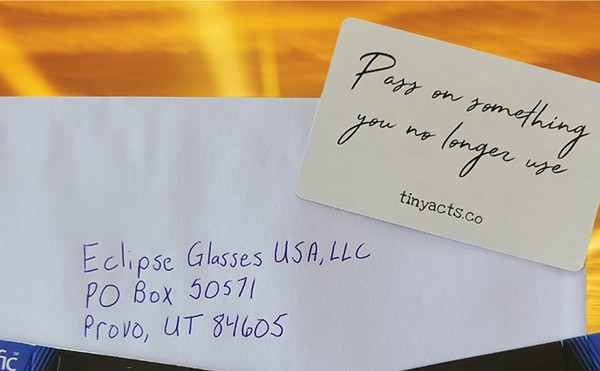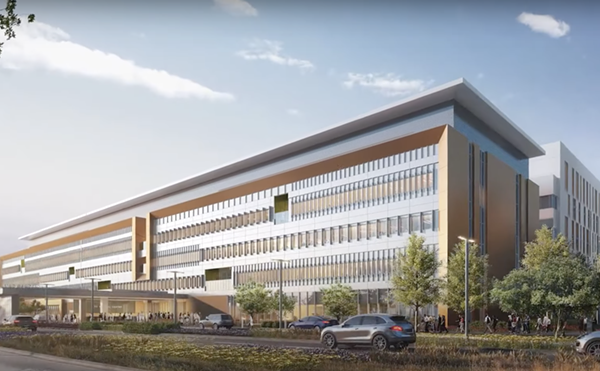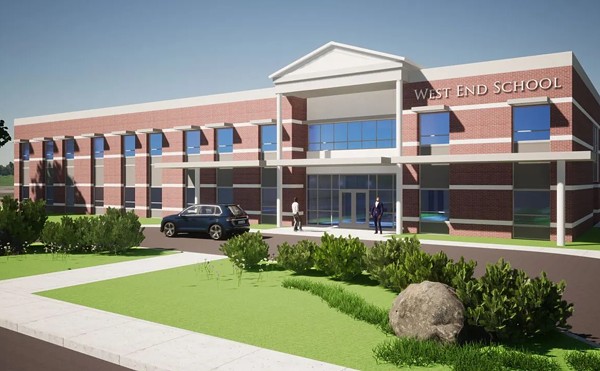
The African American Heritage Foundation, which backs the project, has created a sort of fundraising road show that was rolled out with a community forum last Thursday at the Urban League. The group laid out their lofty vision for a crowd of about 100 people, then implored them for help getting the museum built. A slideshow and three-dimensional presentation depicted their “dream,” a historically restored exterior encasing slick, modern design and intricate exhibits comprising a full sensory portrayal of the African-American experience, from Africa to slave ship to Kentucky trolley.
They hope to build — or rebuild — excitement for the languishing project as they embark on a $5 million capital campaign over the next seven weeks. That money is one of the stipulations for securing a $7 million loan from US Bank; another stipulation is that the state would agree to release federal aid for the project four years early.
Those aren’t easy tasks, as money and bureaucracy — stalled paperwork and intense scrutiny — have been serious obstacles. It’s clear the group hopes to foment a grassroots lobbying effort; they’ve implored supporters to make their voices heard in Frankfort through persistent phone calls and e-mails.
They’re also asking for cash, encouraging individuals to take their case to churches and neighborhood groups.
The project has suffered fundraising setbacks almost from the outset in late 2000. Like other things vying for funding, it fell off the radar after the 9/11 attacks captured the focus of private institutions nationwide and locally.
The Center for African American Heritage was unique, however, in that $10 million of its funding came from the complicated and already controversial Ohio River Bridges Project, through the Transportation Cabinet. In spring 2003, former 3rd District U.S. Rep. Anne Northup and others criticized the funding as inappropriate to the Bridges Project, then estimated at $1.9 billion. (That cost is now estimated at $3.9 billion.)
But because the museum is in the “Trolley Barn,” a historic building formerly used for ground transportation, it is eligible for what are known as Transportation Enhancement funds. Such monies are used for various projects, from buying new plants for off-ramps every spring to archeological research. Former Kentucky Heritage Council Executive Director and State Historic Preservation Officer David Morgan said the project clearly fits that designation.
The Foundation’s request for accelerated distribution of those funds sparked a much-publicized audit that halted construction in December 2005, nearly three years after groundbreaking. The routine audit, which should have taken up to 60 days, dragged on for nearly six months.
What stands now at the corner of 18th Street and Muhammad Ali Boulevard is an oddly new, yet indisputably abandoned eyesore in the Russell neighborhood. The project is about two-thirds finished. Although the audit found no criminal wrongdoing, it left a cloud over the project.
“Nobody’s going to give you any money when you’re being audited, or if they think funds are being misused,” Foundation president Clest Lanier said Monday.
This past December brought a visit to the site from Gov. Ernie Fletcher, and a state agreement to pay about $1.76 million in delinquent contractor bills. But Metro Council only just received the agreement and voted to pass that money onto contractors last week, at the very moment museum staff and supporters just a mile and a half away voiced confusion over constant delays. The group said even this bit of progress creates a problem; no additional federal money will be released until the contractor’s payment is reimbursed to the federal government.
That money could be replenished with the US Bank loan partially contingent on an agreement from the state to release money faster. The price tag rises the longer the project remains unfinished. The Foundation’s original goal of raising $16 million by March 31, 2001, was to add to $4 million already pledged in local, state and federal government money. Completion was expected within two years. The opening was then pushed back to 2005 because of problems with chipping paint and funding. Now the group faces the bank’s more pressing end-of-March deadline.
But the group pointed out Thursday that the museum is not just a money issue, but concerns “a history of an entire people, Kentucky’s African Americans.”
It seems that the museum would have pursued statewide financial support as they solicited artifacts and stories. Lanier said the small group only had the resources to focus on local and national funds first. As they now take their case throughout Kentucky, they’ll start with cities such as Frankfort, Owensboro and Bowling Green, which have relatively large pockets of African Americans.
Prominent local community members in fields from education to business to the arts have asserted that the completed project will be an important economic and cultural asset to Louisville and Kentucky. Supporters, who have been curious and even suspicious about hold-ups, are just hoping the Foundation can finally pull together the cash behind the asset.
Contact the writer at [email protected]





